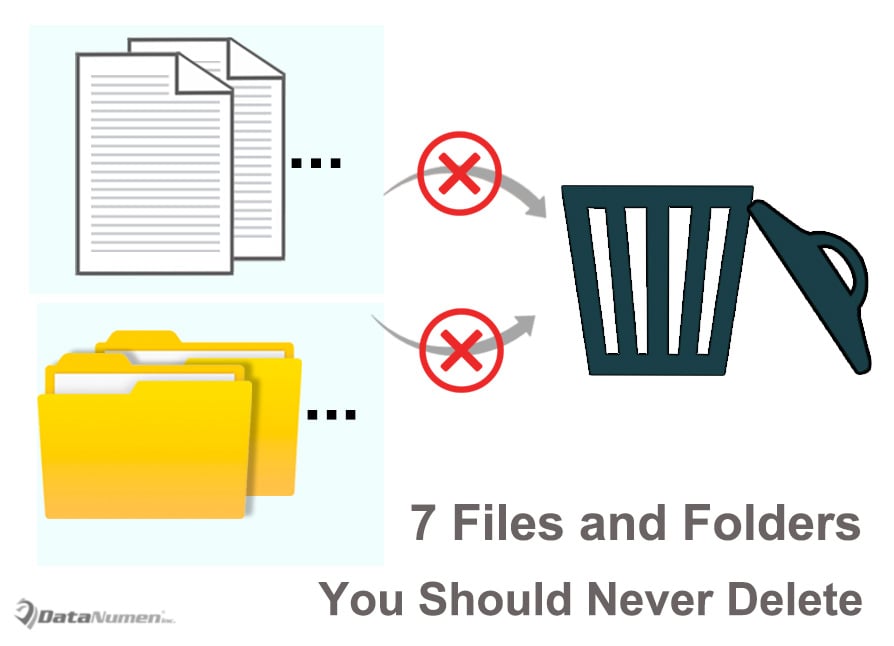In order to free up more space on your PC, you may be used to deleting useless large files regularly. But you should never delete the 7 files and folders listed in this post. Otherwise, Windows system may crash and you may suffer miserable data loss.
As we all know, aside from our personal data, Windows system is also occupying much storage space on our PC hard drive. Several files and folders generated by Windows are actually responsible for supporting the operating system to work smoothly and effectively. Therefore, in your daily operation, you should take good care of these default files and folders. Provided that you delete or modify them by mistake, you will encounter an unstable Windows system, data corruption such as damaged Outlook file, data loss and other more frightening results. Here we’ll list out 7 Windows default files and folders which you had better leave alone.

1. “Program Files” Folder
You may be very familiar with the “Program Files” folder, where all the programs on your PC are installed by default. Thus this folder indeed contains considerably vital library files and other system files that support your PC applications to run normally. So, if you delete the folder, your applications will malfunction and even crash, and then data gets lost.
2. “Windows” Folder
“Windows” folder is also pretty significant. All files and subfolders in this folder are extremely essential for the smooth working of each aspect of your Windows system. Hence, you should never make any operations on it, no matter movement, modification or deletion.
3. “System32” Folder
“System32” folder is actually a subfolder under “Windows” folder. It contains dozens of a lot of library files which are very necessary for the system and default Windows program, such as the files for system boot or for Calculator or Paint. Therefore, it is suggested not to touch this folder.
4. “WinSxS” Folder
Apart from “System32” folder, WinSxS is another important and sensitive folder under “Windows” folder. It means Windows Side-By-Side. It’s in charge of solving the compatibility issues with old versions of Windows. Of course, it also contains many versions of library files required by your programs. Thereby, you shouldn’t delete or alter it as well.
5. “System Volume Information” Folder
“System Volume Information” folder is a protected folder, located at the partition where your PC Windows is installed. As usual, it contains various system data involved with the drive partition. Plus, the restore points on your PC are located in this folder too. Thus, you should never attempt to mess with it at will.
6. “Pagefile.sys” File
Pagefile.sys file is hidden on Windows. But you can enable “Show Hidden Files and Folders” option to view it. Windows uses this file as virtual memory. By default, your PC will firstly use your RAM to store data. But if RAM becomes full, Windows will move all the data from RAM to the hard drive within the Page file. It can maintain performance of your computer. So, although it may take up some space, you still had better leave it alone.
7. “Swapfile.sys” File
Similar to “Pagefile.sys” file, “Swapfile.sys” file is also stored in the root of your PC system drive. It’s utilized by Windows operating system to save all data of RAM in hibernation mode. Moreover, it also helps enable the “hybrid boot” fast booting in Windows 8 and 10. Therefore, it is wise not to mess up with this file, either.
Author Introduction:
Shirley Zhang is a data recovery expert in DataNumen, Inc., which is the world leader in data recovery technologies, including recover sql and outlook repair software products. For more information visit www.datanumen.com